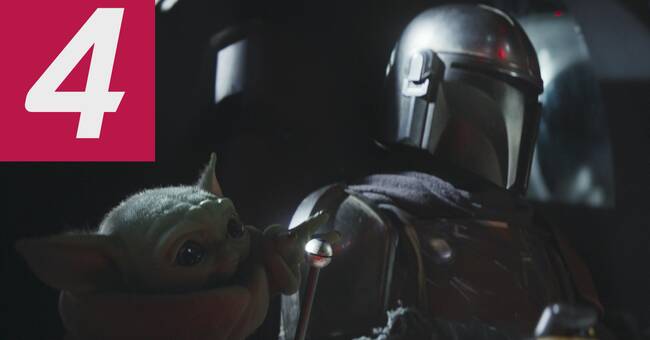The
Star Wars movies of
recent decades
have with varying care honed the universe - it should look, sound, smell and feel the way it did when we were children.
So not how it really looked in the today quite dated films, but how it
felt
.
Of course, it's like grabbing for smoke.
It has been five years
since the Space Empire was defeated, warlords and mercenaries rule the galaxy.
The Mandalorian (Pedro Pascal) is a skilled bounty hunter, as nimble in his line as with the laser guns.
When he enters an escape room, the murmur becomes silent.
He always takes his husband, even if it means a minor genocide along the way.
But times are tough.
Clients pay less than before.
When he then undertakes a particularly lucrative mission - to capture a special creature for an influential person called the Client, (Werner Herzog), everything changes.
The creature he is about to catch
turns out to be an ugly green baby with pointed ears.
Online, the creature has been called Baby Yoda, as it looks like a mini-version of Luke Skywalker's 900-year-old mentor.
In the series, it's called The Child.
When someone is so cute, and also soon turns out to have supernatural powers, a conflict is created inside the cold-blooded bounty hunter.
Can you just leave such a sweet child to such an obvious asshole?
The Mandalorian and The Child
form a classic "odd couple": the puppy and the kind-hearted idiot who can not read the signals.
Slowly, the cold-blooded bounty hunter comes into contact with a fragile core that still stings at the bottom of his steel-clad chest.
You are drawn to memorable films like Turner & Hooch, Rain Man, or why not A Man Named Ove.
Director Jon Favreau
has used the word "Clint Eastwood-esque" to describe his main character.
In fact, a lot is borrowed from the spaghetti western genre.
Not least how the Swedish Ludwig Göransson's excellent compositions invoke the late Ennio Morricone when flutes and guitars are sensed behind the laser fighters and the coughing spaceships.
But the spaghetti west is the surface.
The Mandalorian is above all a feelgood in outer space.
It is the interplay between The Child and The Mandalorian that is the treasure.
We who have seen Game of Thrones
know how charismatic the good Pedro Pascal can be, but how he manages to be so charming with a helmet over his head and in interaction with a doll (which thankfully is not animated but controlled by a puppet player), is difficult to understand.
The music helps, of course, and the costume, which for the sake of the unusual plays an important role.
In The Mandalorian, John Williams' iconic leitmotif from 1977 is missing, but the question is still whether it is possible to make it feel more like Star Wars than this.

